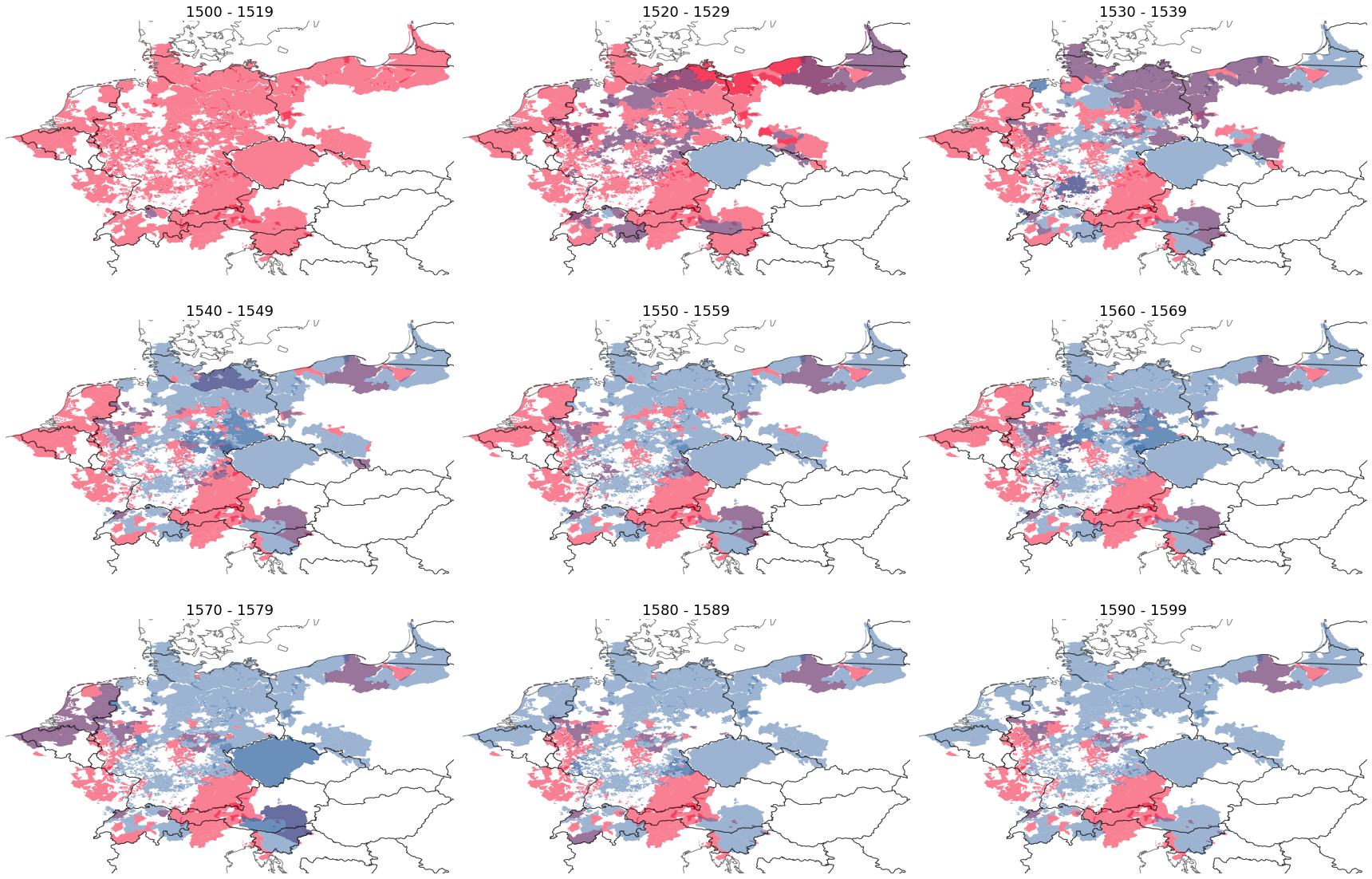The role of neighbourhood relations in confessionalisation
Ramona Roller, Frank Schweitzer and Christoph Strohm
socarxiv (2022)
Research: Social Influence
Abstract
By means of a statistical model we study the adoption of Protestantism duringthe Reformation for 262 territories of the Holy Roman Empire. Our unit of analysisis a territory and the dependent variable indicates whether and when the territ-orial ruler adopted Protestantism. The independent variables are based on seventheoretical factors that historiographical research has identified to be importantfor the adoption of Protestantism, and on neighbourhood relations. We use anEvent History Model to track changes in the variables over time and compute theimportance of each driving factor. Our results reveal that geographic neighbour-hood relations explain the adoption of Protestantism best. The more neighbourshad become protestant in the recent past, the more likely is a territory to becomeprotestant itself. This effect is strongest for weak territories, which may point to-wards a strategic hesitation to adopt Protestantism in politically uncertain times

